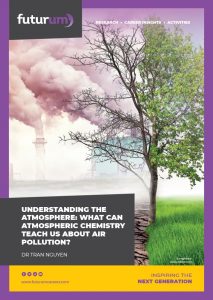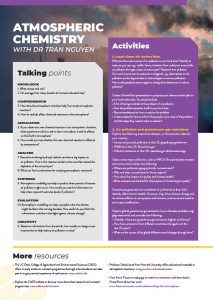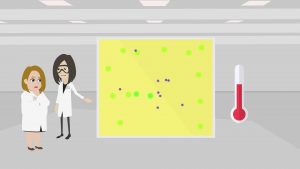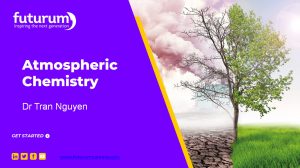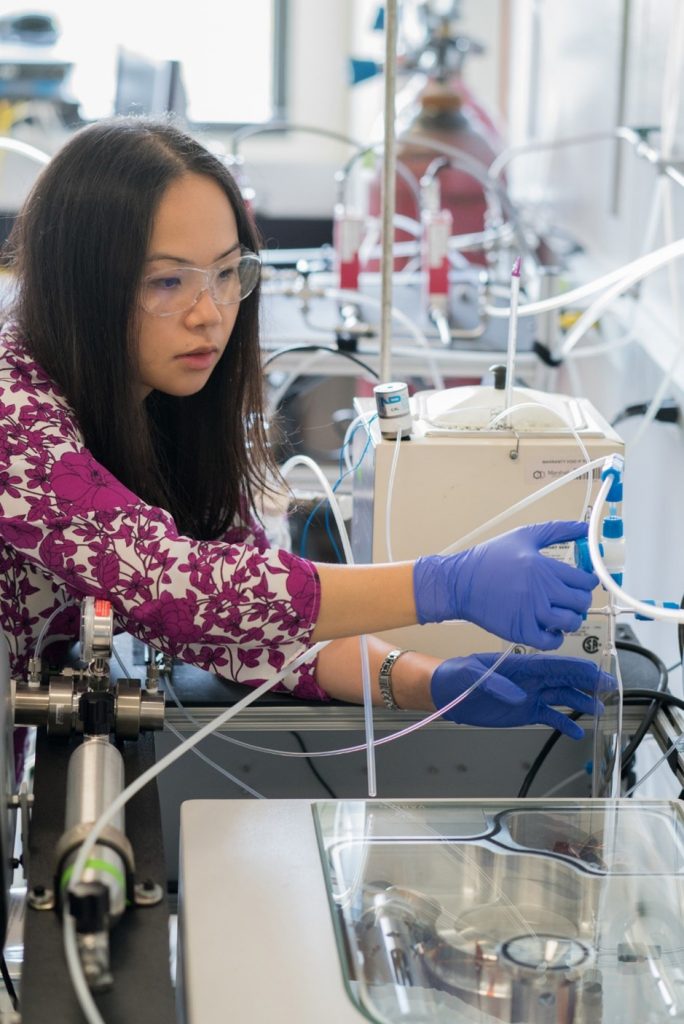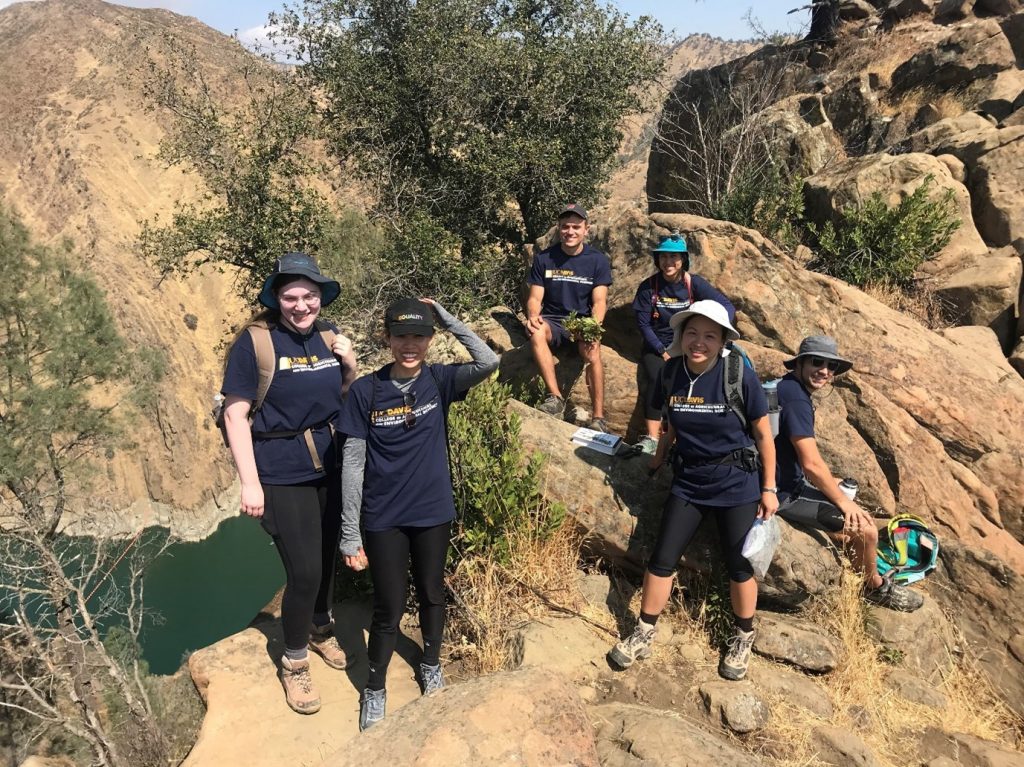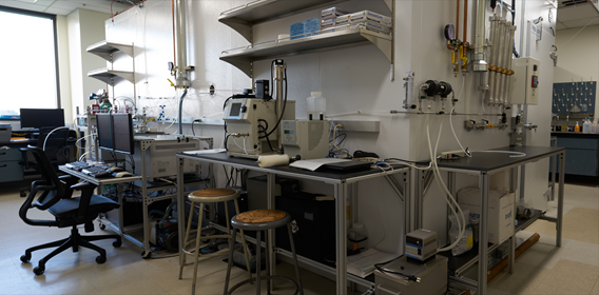Understanding the atmosphere: What can atmospheric chemistry teach us about air pollution?
Chemical reactions taking place in the atmosphere have a huge impact on our lives. Chemicals released from the burning of fossil fuels create air pollution and are one of the main drivers of global climate change. Dr Tran Nguyen, from the University of California Davis in the US, is studying newly discovered atmospheric reactions to understand the effects they have on air pollution and the climate.
TALK LIKE AN ATMOSPHERIC CHEMIST
Aerosol — a suspension of fine solid particles or liquid droplets in a gas
Chlorofluorocarbon (CFC) — a particularly potent greenhouse gas that is largely responsible for the depletion of the ozone layer
Greenhouse gas — a gas that contributes to the ‘greenhouse effect’, also known as ‘global warming’, by trapping heat in the Earth’s atmosphere
Radical — an unstable atom or molecule that has at least one un-paired electron, making it highly reactive
Smog — a type of intense air pollution, most commonly experienced in cities, caused in part by the excess output of noxious gases and smoke
Every year, you will take more than 8 million breaths. That’s roughly 22,000 breaths every single day. If you happen to live in the countryside, many of those breaths will be full of fresh air and the earthy aromas of rain-soaked forests and freshly ploughed fields. If you’re lucky enough to live on the coast, your lungs may be filled with salty sea air and the fishy fragrances of old stone harbours. If, however, you are one of the 4.4 billion people living in a city or urban environment, many of your breaths may not be quite so refreshing.
Air pollution is a major problem in cities across the globe. Emissions from the swarms of vehicles that clog up the streets and industrial complexes that belch out smoke increase the number of toxic particles and pollutants in the air. In some instances, these pollutants build up to extreme levels and create smog that lingers over cities in a thick, odorous cloud. Smog poses a serious hazard to human health and can cause long-term health problems.
Airborne emissions can also have dangerous effects on a much larger scale. Greenhouse gases released from human activities are one of the main drivers of climate change. Carbon dioxide is the major greenhouse gas emitted from human activities, and its atmospheric concentration has exponentially increased since the industrial revolution.
Chlorofluorocarbons (CFCs) are particularly potent greenhouse gases that are largely responsible for the holes in the ozone layer above Antarctica and the North Pole. The ozone holes allow harmful levels of ultraviolet (UV) radiation to pass through our atmosphere. Thankfully, research in the field of atmospheric chemistry identified CFCs as the culprit, and subsequent efforts to reduce the use of these gases has led to a partial recovery of the ozone holes.
Atmospheric chemistry is hugely important to society. On top of discoveries relating to smog and CFCs, atmospheric chemistry has also shed light on the source of acid rain, and the harmful nature of fertilisers and pesticides that seep into the water cycle. Understanding how chemicals interact with particles and water droplets in the air is a key focus of the field. At the University of California Davis, Dr Tran Nguyen is one such atmospheric chemist who is investigating these interactions.
Why are these interactions important?
Water exists at many different scales in the atmosphere. Wet aerosols are nanoscopic water-containing particles suspended in the air and are at the smallest end of the spectrum. Raindrops, on the other hand, are much larger. The size of the water particles can have a large impact on how concentrated certain chemicals are in the atmosphere. Smaller particles have higher concentrations because they contain less water to dilute the chemicals. For example, wet aerosols contain high concentrations of salts and other organic molecules.
The size of water particles can also impact how quickly chemical reactions take place in the atmosphere. For Tran and her team, this is very important because the quickest reactions can have more pronounced effects than slower ones.
What questions is Tran trying to answer?
Tran and her team are trying to assess how these chemical reactions are altered by human activity. Many human activities release chemicals into the surrounding environment, in the form of gases or aerosol particles, which then go on to react with oxygen, water and other compounds in the air.
For example, acid rain forms when the sulphur dioxide released from burning coal reacts with water droplets. This is one chemical reaction that atmospheric chemists have studied in detail. However, because the atmosphere is so complex, and because we release so many different chemicals into the environment, many reactions are still being discovered.
In her lab, Tran studies the mechanisms and kinetics of newly discovered atmospheric reactions. In other words, she studies how these reactions happen and how quickly they occur. She uses this information to see how these reactions affect air quality and the climate.
How is Tran studying these reactions?
Tran and her team study aerosols in an atmospheric chamber. This is a specialised enclosure in which they can study how aerosols react with different chemicals and respond to different atmospheric conditions. For example, they can control the humidity, temperature and light conditions to mimic different climates.
There are countless reactions taking place in the atmosphere at any one time; however, in order to study a particular reaction, researchers have to isolate it. The atmospheric chamber allows them to do just that. “In the atmosphere a molecule can be free to react in any number of ways,” says Tran. “In our chamber, we use different chemical conditions to push the reaction toward one ‘fate’ to really study a single pathway in depth.” This technique allows Tran and her team to study individual reactions in great detail.
Surrounding the atmospheric chamber are several powerful instruments that monitor each reaction. These instruments measure how fast the reactions take place and what chemical products are produced. This gives the team an idea of the impact that each reaction might have on the atmosphere outside of the lab.
What has Tran discovered so far?
Tran and her team have made several interesting discoveries. In one recent project, they observed a reaction that has never been seen before. They found that shining artificial sunlight on a concentrated solution of sulphate ions can generate sulphur-containing radicals. These are highly reactive molecules that react with many other particles in the atmosphere.
When radicals are created in the atmosphere, they can degrade other compounds. For example, when CFCs reach the upper levels of the atmosphere, they are destroyed by UV radiation from the sun, releasing radicals. These radicals then react with ozone molecules and cause rapid depletion of the ozone layer. In other situations, radicals can have complex effects on pollution. For example, hydroxyl radicals are great at breaking down hydrocarbons and carbon monoxide molecules. While the hydroxyl radical is called the ‘cleanser of the air,’ this chemistry can also result in ozone and particle pollution depending on the environmental conditions.
It is not always clear what effect a particular chemical reaction will have on the atmosphere. The sulphur-containing radicals generated in Tran’s newly discovered reaction can produce organosulphates. These chemicals are found in both polluted and clean air, and research into their impact on air pollution and the atmosphere is ongoing.
What are the next steps for Tran’s research?
Reference
https://doi.org/10.33424/FUTURUM360
“Our long-term plan is to produce insights about which reactions are most important for atmospheric modelling,” says Tran. Atmospheric modelling is used to predict what the atmosphere and climate will look like in the future. To make these predictions, scientists need to have a good understanding of the various chemical reactions that take place in the atmosphere.
Atmospheric models can look at both short-term and long-term changes in the atmosphere. Short-term models can help inform weather forecasts and recognise the conditions that might lead to dangerous air pollution events such as the formation of smog. Long-term models make predictions about what the Earth’s climate might be like in the future. These models can help us prepare for the ever-worsening effects of climate change and will likely be an important tool for decades to come.
 Dr Tran Nguyen
Dr Tran Nguyen
University of California Davis, USA
Field of research: Atmospheric Chemistry
Research project: Studying chemical reactions in the atmosphere to understand their impact on air quality and climate change
Funders: US National Science Foundation (NSF) Environmental Chemical Sciences Program (grant #2046933), National Oceanographic and Atmospheric Administration, Tobacco Related Disease Research Program
ABOUT ATMOSPHERIC CHEMISTRY
Atmospheric chemistry is the study of the chemical reactions that take place in the Earth’s atmosphere and the impacts that they have on our planet. The composition of the atmosphere can be affected by natural phenomena, such as volcanic eruptions and lightning storms, as well as human activity. Burning coal, driving cars and spraying pesticides are just some of the ways in which humans influence changes in the Earth’s atmosphere.
The impact that these activities have on the atmosphere can be problematic. The problems caused by these activities range from the production of acid rain and smog to the depletion of the ozone layer and the acceleration of the greenhouse effect, which is a major driver of global climate change.
Atmospheric chemists study these changes and the chemical reactions that cause them in an attempt to find solutions. Our atmosphere is very complex, so understanding the chemical reactions that take place within it and their effects is a huge challenge. However, it is important work and the concerted efforts of atmospheric chemists like Tran are likely to play a huge role in the fight against climate change.
What research opportunities will be open to the next generation of atmospheric chemists?
Scientists are constantly creating new chemicals for society to use. Some of these, such as microplastics and a new generation of industrial products, personal care products and pesticides, are bound to end up in the atmosphere. As such, the next generation of atmospheric chemists will have lots of opportunities to study how these new chemicals interact in the atmosphere.
As climate change continues to worsen, atmospheric chemists will have opportunities to study the chemical processes in the atmosphere that contribute to the problem. For example, understanding how wildfires affect the chemistry in the atmosphere will become increasingly important as wildfires become increasingly common. The next generation of atmospheric chemists will be tasked with understanding these problems and discovering any potential solutions for their mitigation.
Other areas of study include the interactions between aerosols and clouds, the long-range movements of pollution in the air and the ever-advancing field of computer modelling.
What is rewarding about working as an atmospheric chemist?
Being an atmospheric chemist involves collaborating with many different scientific disciplines including physics, maths, engineering and ecology. Atmospheric chemistry is also quite a young field of science and so there are lots of important things to discover. These discoveries often prove to be very useful to society as a whole, providing insights into air quality and climate change.
PATHWAY FROM SCHOOL TO ATMOSPHERIC CHEMISTRY
• At school, chemistry, physics and geography will cover the basics of pollution, climate change and chemical reactions.
• Learning how to code and understand programming languages will be very useful.
• At university, degrees in atmospheric chemistry, chemistry, atmospheric science or meteorology could all lead to a career in atmospheric sciences.
EXPLORE CAREERS IN ATMOSPHERIC CHEMISTRY
• The National Centre for Atmospheric Research (NCAR) has a free class on atmospheric chemistry taught by leading scientists in the field (www2.acom.ucar.edu/atmos-chem-class).
• The NCAR also has a YouTube channel with lots of informative videos (www.youtube.com/c/ncaratmosphericchemistryobservationsmodeling).
• The National Oceanographic and Atmospheric Administration has lots of useful resources, including a great education series on climate science (www.noaa.gov/climate-education)
MEET TRAN
Growing up in Southern California inspired me to study air quality as smog is a common problem that we face. When I was young, I was mainly interested in arts, sports and reading.
Throughout my time at school, my teachers fostered my love for learning. By the time I went to college, I still hadn’t decided which subject to major in and I was leaning towards getting a degree in fine arts. However, I took a general chemistry course which I really enjoyed as I could see the potential for chemistry to help society.
I graduated from the University of Southern California with a degree in chemistry. Although there were no environmental chemistry courses there, I had excellent chemistry professors who inspired me to pursue my interest in environmental chemistry and continue to graduate studies. My graduate experience at the University of California Irvine and postdoctoral experiences at Caltech University shaped the atmospheric chemistry specialty that I ended up doing research in.
I am proud of how much I have learnt as a scientist. I was once on a field sampling mission in Alabama and learnt lots of new things in a very short space of time. I learnt how to do a physics-based Eddy Covariance analysis and how to fix some of our instruments, all within the span of a few days and with no prior experience. It was the most intense and on-the-spot learning experience I’ve had, and it taught me how fast we as humans can learn things when we need to use them right away.
When I need a break from work I like to retreat to my garden or walk and cycle around in nature. I like to hang out with my family and friends, especially my daughter.
In the future, I would like to inspire as many people as possible to learn about environmental science.
Tran’s top tips
1. Don’t be scared to try new things! I didn’t have any experience of atmospheric chemistry before I started my research but being passionate about it helped me to be successful.
2. Be confident and vocal about your research and your passions. We need scientists who aren’t afraid of speaking to the public and to policymakers.
3. Make sure to have a good work-life balance. Spending quality time in nature or with your friends and family is just as important as your research, if not more so.
Do you have a question for Tran?
Write it in the comments box below and Tran will get back to you. (Remember, researchers are very busy people, so you may have to wait a few days.)

